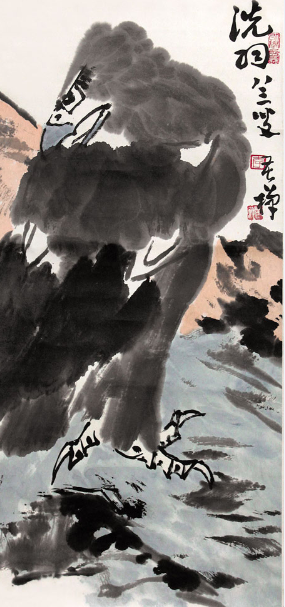收购名人字画鉴定一方印章是否为明清时代的,经过辨识包浆质地,分析刀法特征,观看印纽体式这三个过程,应该是不难断定的。但涉及具体篆刻名家,则必须依据存世可查的各项物证资料,及印章本身的边款内容风格来仔细考证。严格说来,篆刻家同时也是风格不一的书法家,自书自刻,或者不书而刻的款识,常常表现出一种毛笔所达不到的韵味。有的神似晋唐小楷,有的宛如魏晋草书,有的像北碑,有的像汉简,各种书体神韵毕现,仿佛成了一个微型的碑林世界。
It should not be difficult to determine whether a seal is from the Ming and Qing Dynasties by acquiring celebrity calligraphy and painting, identifying the paste texture, analyzing the characteristics of knife technique and watching the new seal style. However, when it comes to specific seal cutting masters, it must be carefully verified according to various material evidence materials that can be checked in the world and the content and style of the side money of the seal itself. Strictly speaking, Seal Engravers are also calligraphers with different styles. The style of self calligraphy and self carving, or carving without calligraphy, often shows a charm that can not be achieved by brush. Some look like Xiaokai of Jin and Tang Dynasties, some look like cursive script of Wei and Jin Dynasties, some look like North steles, and some look like Han bamboo slips. The charm of all kinds of calligraphy seems to have become a miniature world of steles.

篆刻家在印旁刻款,始于明代。印款除题年月姓名外,有时还加上其他词句,类似跋语。内容多的,占满一面、两面、三面、四面,甚包括石顶刻上五面。有的书称印跋。石章刻边款的始创者文彭,刻法如同刻碑,是先写款字,然后依墨下刀,每一笔双面着刀。继之者何震则开创了不写款字,操刀便刻,每一笔只刻一刀的单刀直刻法。双刀法依笔迹而刻,比较能体现笔意,单刀直切,淋漓痛快,则比较容易表现出刀味与石味。明末清初一批印人,石章边款不论篆隶真草,还是多数用双刀法。直到乾隆年间,丁敬开始全用单刀法,蒋仁、黄易以下群起效之,单刀法遂成气候。
Seal Engravers began to carve money next to the seal in the Ming Dynasty. In addition to the date and name of the printed money, sometimes other words and sentences are added, similar to postscript. There are many contents, including one side, two sides, three sides, four sides, and even five sides engraved on the stone top. Some books are called printed postscript. Wen Peng, the originator of the edge carving of the stone seal, is like a stele. He writes the words first, and then writes the knife according to the ink, with the knife on both sides of each stroke. He Zhen, the successor, created the single knife direct engraving method of engraving without writing words and only one knife for each stroke. The double knife method is engraved according to the handwriting, which can better reflect the meaning of the pen. If the single knife is cut directly and incisively, it is easier to show the taste of knife and stone. In the late Ming Dynasty and early Qing Dynasty, a group of people printed on the edge of stone seals, whether the seal script was written on real grass, or most of them used the double knife method. Until the reign of Emperor Qianlong, Ding Jing began to use the single knife method. Jiang Ren and Huang Yi took effect, and the single knife method became popular.
五百年来边款艺术的辉煌成就,事实上却是不太为人甚印人所注目。古往今来,无数有作为的印人们,似乎是默守着“作而不述”的契约。印款文字是书法艺术在石章上的再现,刻刀则是名副其实的铁笔,印人书法水准的高下优劣,将真实地反映于印款。因此,历来的篆刻家,均不甘愿放弃偌大的足以表现技艺的“疆场”。为了刻款的需要,他们认真地研习真、行、草、隶多种字体,少精于一体,以免造成印面颇佳而印款难以匹配的遗憾。小中寓大,尺水兴波,印款的篇幅总多于印面,大智慧的印人岂有不做其文章而尽情发挥的?印款文字中蕴藏着丰富而珍贵的史料。
In fact, the brilliant achievements of BianKuan art in the past 500 years have not been noticed by people or even Indians. Throughout the ages, countless successful Indians seem to keep the contract of "doing without telling". Printing characters are the reproduction of calligraphy art on stone seals, and the carving knife is a real iron pen. The quality of printing calligraphy will be truly reflected in printing. Therefore, the traditional Seal Engravers are not willing to give up such a large "battlefield" to express their skills. In order to meet the needs of engraving, they carefully studied the real, line, cursive and clerical fonts, at least proficient in one, so as not to cause the regret that the printing surface is quite good and the printing is difficult to match. Small in large, feet of water make waves, and the length of printed money is always more than that of printed surface. Is there a wise Indian who gives full play to it without making his articles? Printed characters contain rich and precious historical materials.
古代印玺的鉴定;秦统一六国之前,印章一概称玺。之后,则专称天子之印为玺,其余的都叫印。汉代的时候,诸侯王也称玺、将军称章,其余均称印。以后各代虽然制度上有所不同,但在称谓上并无多大的变化。清代,皇帝的印称玺,也叫宝,亲王以上的印则称宝,郡王以下官员称印,钦差称关防,图记等。
Identification of ancient seals; Before Qin unified the six countries, all seals were called seals. Later, it was called the seal of the son of heaven, and the rest were called seals. In the Han Dynasty, princes and kings were also called seals, generals were called seals, and the rest were called seals. Although the systems of the later generations are different, there is not much change in the appellation. In the Qing Dynasty, the seal of the emperor was called seal, also called treasure, the seal above the prince was called treasure, the seal of officials below the prince was called seal, the imperial envoy was called Guanfang, and the small officials were called bell mark, picture mark, etc.
